How to respond to Netflix? Let us count the ways traditional media companies are trying: ATT-Time Warner; 21st Century Fox- Disney (which might actually be beaten by Comcast); Sky Broadcasting-Fox or Comcast; Viacom-CBS; Discovery-Scripps Networks; Lionsgate-Starz. And those are just the most recent examples.
The question is whether - or even how - any of this deal-making and asset-shifting might sufficiently realign the media delivery business in order to respond to the fundamental change in behavioral economics driving consumer choice for entertainment. Or to put it another way; playing catch-up's a bitch. JL
Alex Sherman reports in CNBC:
The pay-TV bundle, the lifeblood of the U.S. media ecosystem, is dying. To blame: Competition on mobile devices. Video games. The internet. But executives at most media companies agree that Netflix (which) pivoted its business around streaming video over the internet will replace TV, is the (real culprit). Legacy giants are contemplating how to beat Netflix. (But) counter-positioning is: "a new, superior business model which the incumbent does not mimic due to anticipated damage to their existing business."
The media industry is in a frenzy.
AT&T is buying Time Warner for $85 billion after overcoming a challenge from the Justice Department. The Murdoch family has agreed to sell the majority of its 21st Century Fox empire to Disney.
Comcast plans to crash that deal with a higher offer. It has also outbid Fox for the remaining 61 percent of European pay-TV provider Sky. Those two deals together could total $100 billion when the bidding is done.
Viacom and CBS continue to dance around merging. Discovery closed a $14.6 billion acquisition for Scripps Networks in March. Lionsgate completed its $4.4 billion deal purchase of Starz in December.
There's been a drastic change among legacy media company executives the last two years. Their CEOs won't say it publicly, but they're saying it privately: The pay-TV bundle, the lifeblood of the U.S. media ecosystem for decades, is dying.
There's a lot of places to blame. Competition on mobile devices. Video games. Even the internet in general.
But executives at most traditional media companies agree that Netflix, if not directly responsible, is at least holding the murder weapon. The 21-year-old company that was once best known for killing DVD rental giant Blockbuster has pivoted its entire business around the idea that streaming video delivered over the internet will replace the linear TV.
See also: Reed Hastings won by studying Amazon — then running in the opposite direction
Consumers seem to agree. Netflix gained 92 million customers in the last five years while the number of people who pay for cable declines year after year. That dynamic has persuaded investors to believe in Netflix's high-risk business model of running cash-flow negative to outspend traditional media companies for content. It has let Netflix strike deals with everyone from David Letterman to Ryan Murphy to Barack Obama.
And the more Netflix spends, the more investors cheer.
The success of Netflix in the market is why we're seeing "the greatest rearranging of the media industry chessboard in history," according to BTIG media analyst Rich Greenfield.
But chasing scale isn't the answer for every media company, according to Netflix CFO David Wells.
"Not everybody's going to get big," Wells said in an interview. "The strategic question is, 'what type of business do I want to be in the next five or 10 years?'"
So legacy giants are now beginning to contemplate how to beat Netflix at its own game. Comcast, which owns CNBC parent NBCUniversal, has had preliminary talks with AT&T to start an over-the-top digital streaming service with NBCUniversal and Warner Bros. content, according to people familiar with the matter. Discovery is also pondering its own OTT service, potentially with a global technology company, said other sources. Disney is debuting its streaming service next year.
Wells is skeptical about this approach.
"The consumer doesn't want 100 direct-to-consumer services," he said. "The consumer wants great breadth and amazing personalization so they can find something in 30 seconds instead of five minutes."While traditional media is racing to catch up, Netflix CEO Reed Hastings is not looking back at the runners he's passed.
Hastings has never really feared legacy media, said Neil Rothstein, who worked at Netflix from 2001 to 2012 and eventually ran digital global advertising for the company. That's because Hastings bought into the fundamental principle of "The Innovator's Dilemma," the 1997 business strategy book by Harvard Business School professor Clayton Christensen.
That book, often cited in tech circles, explains how disruptive businesses often start off as cheaper alternatives with lesser functionality, making it difficult for big incumbents to respond without cannibalizing their cash-rich businesses. Over time, the newcomer adds features and builds customer loyalty until it's just as good or better than the incumbent's product. By the time the old guard wakes up, it's too late.
"Reed brought 25 or 30 of us together, and we discussed the book," Rothstein said of an executive retreat he remembered nearly a decade ago. "We studied AOL and Blockbuster as cautionary tales. We knew we had to disrupt, including disrupting ourselves, or someone else would do it."
There's no guarantee Netflix can keep up its big spending without seeing its stock fall back to Earth. But the media giants can no longer afford to wait and find out.The unfair fight
Let's say you're a carpenter, and you make furniture out of mahogany. You pay for mahogany wood and sell a finished product for a profit. You've been doing this for years, and you've made a good living from it.
One day, a new guy — let's call him Reed Hastings — moves in next door. At first, Reed seems awesome. After looking through your store, he buys a bunch of the dusty pieces in the back no one else wanted.But after a while, Reed decides to get into the furniture manufacturing business, too. And now he's telling your mahogany supplier that he'll pay 50 percent more for the same wood. Then another competitor, a rich fellow named Jeff Bezos, shows up across the street. He wants the mahogany, too, and he's bidding 75 percent more.
This is crazy, you think. How are these guys able to afford to pay so much more for the same stuff? They've got to be passing along the costs to their customers, right?
But they're not. You walk in their store, and they're selling the same quality furniture you make for less than you sell it. And cash from investors is pouring in.
You say, what the hell? I'll up my spending, too. This is the new world, I guess. So you bid 100 percent more for mahogany. Instantly, your stock falls. "Boo!" say your investors. "Your business model is dying!"
This sounds like a Franz Kafka novel. But this allegory explains the current plight of legacy media.
Imagine Lionsgate is the mahogany carpenter. Lionsgate develops original and licensed movies and TV shows; it pays for the talent and the production costs and receives money in return from cable channels, digital outlets, TV networks and so on. It owns the "Hunger Games" franchise, "Mad Men" and "Orange is the New Black." That last one, of course, runs on Netflix.
For years, Netflix was a welcome addition to the media landscape because it bought a lot of library content that was old or not that popular. Plus, Netflix didn't get in the way of the two main ways content providers make money — signing deals with pay-TV operators like Comcast, Charter, AT&T and Dish Network, and taking cash from advertisers. Working with Netflix was like finding free money.But the programmers kept asking for higher fees, especially on costly sports rights, and that pushed cable bills higher. Meanwhile, Netflix customers loved the low price — originally less than $8 a month compared with $80 or $100 for cable. When Netflix started offering a handful of original shows, such as "House of Cards" and "Orange Is The New Black," viewers kept coming, and the company's valuation swelled.
Five years ago, Netflix was trading at about $32 per share. Today, Netflix trades at about $370 a share. That's a gain of 1,050 percent.
Over the same period, Lionsgate is down about 15 percent.
A lot of media CEOs believe Netflix is winning because the game is rigged in its favor. Their complaints focus on how companies are valued by investors.
Lionsgate's enterprise value (EV), a good measure of a company's worth, is about $7.5 billion. Its earnings before interest, taxes, depreciation and amortization (EBITDA) over the last 12 months was $520 million. So, Lionsgate trades at a trailing EV/EBITDA multiple of about 14. Discovery, Disney and Viacom all trade at trailing multiples lower than 14.
Netflix has an enterprise value of $165 billion and EBITDA of $1.1 billion, giving it a multiple of about 150.
That's the equivalent of a huge cheering section, throwing money at the company to keep spending.
Indeed, Netflix is now the number one spender on media content outside of sports rights, according to consulting firm SNL Kagan.Can the spending game last?
Some traditional media execs and analysts are skeptical that Netflix can keep it up.
"To be worth $150 billion, someday you've got to make at least $10 billion in EBITDA," Steve Burke, CEO of CNBC parent company NBCUniversal, said in an interview. "There's at least a chance Netflix never makes that."
Netflix spends more money than it takes in each year, funding the gaps with debt. Last year, it posted free cash flow of almost negative $2 billion and has forecast that it could be negative $4 billion in 2018. Netflix's path forward is tied to massive international growth, which will require spending billions more on original programming.
If you think Netflix should trade like a traditional media company, Burke's got a pretty good case Netflix is insanely overvalued. Even Hastings acknowledges Netflix looks more like a media company than a technology company, which tend to trade at much higher multiples."We'll spend over $10 billion on content and marketing and $1.3 billion on tech," Hastings said in his April 16 quarterly earnings conference call. "So just objectively, we're much more of a media company in that way than pure tech."
The music will stop for Netflix if it can't quit burning money, said Wedbush Securities analyst Michael Pachter, who has a sell rating on the stock and a price target of $140 per share.
"Netflix has burned more cash every year since 2013," Pachter said.
As of the end of the first quarter, Netflix had $6.54 billion in long-term debt and $17.9 billion in streaming content payment obligations, with only $2.6 billion in cash and equivalents on hand. In April, Netflix raised $1.9 billion of 5.875 percent senior notes.
"What happens when they need to keep increasing their spending and suddenly they have $10 billion of debt? People are going to start asking, 'can this company pay us back?' If that happens, their lending rate will spike. If Netflix needs to raise capital, they'll issue stock. And that's when investors will get spooked," Pachter said.
Even if his logic is sound, Pachter has been wrong for years on Netflix. Its stock has just kept rising.
Netflix executives even posted a 2005 comment of his on a wall at their Los Gatos, California, headquarters and would chuckle at it as they walked by. It read: "Netflix is a worthless piece of crap with really nice people running it."Hastings: Everyone uses cash wrong
Netflix's use of cash is strategic, even though it's not a typical corporate practice, according to Hastings.
"It's horrible how mismanaged most Silicon Valley companies are in capital," Hastings said in a 2015 interview with venture capitalist John Doerr, a partner at Kleiner Perkins Caufield & Byers and early backer of tech giants like Google and Amazon.
"Microsoft always wanted to have a lot of cash on hand. Apple had no cash 15 years ago in 2000. Who did the most innovation? The cash does not help. The cash insolates you in a bad way. It's a bad thing that companies store cash."
From October 2016: Reed Hastings on AT&T-Time Warner, acquisition speculation:The long-term bull case for Netflix is that its subscriber growth, coupled with incremental price increases, will eventually propel earnings and cash flow.
BTIG's Greenfield predicts Netflix will increase its global subscribers from 125 million to 200 million by 2020. Bank of America analyst Nat Schindler estimates Netflix will have 360 million subscribers by 2030. Netflix estimates the total addressable market of subscribers, not including China, could be about 800 million.
Meanwhile, the number of traditional cable and satellite pay-TV households falls each year, and the declines are accelerating. Research firm Statista predicts there will be 95 million U.S. pay-TV households by 2020, down from 100 million in 2015.
The bigger Netflix gets, the more A+ talent will want to sign exclusive deals with Netflix instead of traditional media companies. It's a virtuous cycle, as top talent then accelerates subscriber growth. It's also a death spiral for the weakest traditional media players.
Netflix has another edge in the content wars. While networks make decisions on TV ratings, Netflix plays a different game. Its barometer for success is based on how much it spent on a show rather than hoping every show is a blowout hit, said Barry Enderwick, who worked in Netflix's marketing department from 2001 to 2012 and who was director of global marketing and subscriber acquisition. Since Netflix is not beholden to advertisers, niche shows can be successful, as long as Netflix controls spending. That also gives Netflix the luxury of being able to order full seasons of shows, which appeals to talent.
"If you're a typical studio, you raise money for a pilot, and if it tests well, you pick up the show, maybe you make a few more episodes, and you wait for the ratings," said Enderwick.
"At Netflix, our data made our decisions for us, so we'd just order two seasons. Show creators would ask us, 'do you want to see notes? Don't you want to see a pilot?' We'd respond, 'If you want us to.' Creators were gobsmacked."
That dynamic has led some content makers to decide they're better off working directly for Netflix, which now spends more on content than many TV networks.
Last year, Netflix signed Shonda Rhimes, creator of "Grey's Anatomy" and "Scandal," to a multiyear contract after more than a decade at ABC Studios. Earlier this year, Netflix signed a deal with Ryan Murphy, creator of "Nip/Tuck," "American Horror Story" and "Glee," to a deal that could reach $300 million, according to Deadline Hollywood. He left Fox TV for the Netflix offer and spurned a counteroffer from Disney. And Jenji Kohan, who created "Orange is The New Black" for Lionsgate? She left for Netflix, too.Fighting back
So if you're a big media company, how do you fight back? What if you're Comcast or Charter or AT&T? How do you stop customers from ditching pay TV services for Netflix?
Compete
Disney is farthest ahead in its plan to fight Netflix head-on.
It's removing all of its movies from Netflix at the end of the year and starting its own service for lovers of Disney and Pixar titles. Disney's digital over-the-top service will launch in 2019 and include movies and TV shows from the Disney-ABC TV Group library. Fox's film and TV library would bolster this service, if Disney completes that deal.
NBCUniversal may be forced into offering a streaming service of its own, potentially with partners who can generate enough must-have content that it becomes enticing to customers with and without cable.
NBCUniversal executives have discussed launching a rival OTT service that would include Universal and Warner Bros. programming, according to people familiar with the matter, although it may not happen if NBCUniversal parent company Comcast succeeds in grabbing Fox from out of Disney's hands. Outside of Fox, NBC views Warner's library of programming as the strongest among potential partners, with Sony No. 2, one of the people said. (AT&T and NBCUniversal spokespeople declined to comment.)Discovery, too, is considering an OTT product, according to people familiar with the matter — perhaps in conjunction with a global tech platform that can showcase its nonfiction programming — an area where Netflix isn't as strong.
"You look at the FAANGs (Facebook, Apple, Amazon, Netflix and Google), and their strategy is focused primarily on scripted movies and scripted series," Discovery CEO David Zaslav said. "Discovery is probably the most effective nonfiction producer in the world. I like our hand given we own all of our content."
A Discovery spokesman declined to comment on plans for the OTT service.There are several problems with competing with Netflix by offering rival online services. Netflix already has a huge first-mover advantage. Stand-alone digital services aren't where legacy media companies want to spend their money. Programming costs are high, and the result may just cannibalize their existing pay-TV model, which brings in billions of dollars from subscriber fees and ads. And just because the market has rewarded Netflix for its strategy doesn't mean investors will cheer on late competitors for following the same model.
Consolidate
AT&T CEO Randall Stephenson told CNBC earlier this year that the Time Warner deal is a direct response to Netflix.
"Reality is, the biggest distributor of content out there is totally vertically integrated," said Stephenson. "This happens to be somebody called Netflix. But they create original content; they aggregate original content; and they distribute original content. This thing is moving at lightning speed."The desire to gain scale to take on Netflix is also driving interest by Disney and Comcast in Fox's assets, which include Fox's movie studio, some cable networks and stakes in Sky, Endemol Shine Group, and Hulu.
But getting bigger isn't the answer for everyone, said Wells.
"Some brands are big enough to compete to be another Netflix, or another YouTube, and vie for the global consumer media dollar," said Wells. "But not everybody's going to be in that bucket. They may want to specialize in content production, and that may be a better business for them."
Capitulate
Comcast and Charter have actually accelerated Netflix's growth by allowing Netflix subscribers access to their programming through their cable boxes. Their strategy is if people are going to watch Netflix anyway, they might as well bundle it with cable service and improve the overall experience. That way, customers can subscribe to both.
Because these cable giants are also Internet providers, they also have a theoretical weapon in their back pocket — the ability to throttle Netflix speeds in the new era without net neutrality safeguards, or at least charge customers for using data via Netflix while keeping home-grown cable applications exempt from usage caps.
"We could experience discriminatory or anti-competitive practices that could impede our growth, cause us to incur additional expense or otherwise negatively affect our business," Netflix acknowledges in its annual report.
But this isn't much of a fear for Netflix. The company knows cable and wireless companies need broadband growth more than video growth to keep flourishing, and few companies drive internet usage like Netflix. T-Mobile now offers its customers Netflix for free.How does this end?
Big Media isn't going to just disappear like Blockbuster. A company like CBS, with a market capitalization of $20 billion, had EBITDA of about $3 billion last year — that's three times as much as Netflix. Many sports rights are still locked up for years by old media companies. That will keep affiliate fees and advertising dollars coming.
But Amazon, Facebook, Apple and Google have massive valuations and cash hoards compared with media companies. They, too, have the balance sheets to spend billions on video without seeing a major dent in their stock prices. And as young consumers get older, the days of paying for a bundle of TV channels may be waning.
So how does this end? Netflix's answer is again in a business strategy book.
Hastings derived many of his strategy lessons from a Stanford instructor named Hamilton Helmer. Hastings even invited him to Netflix in 2010 to teach other executives.
One of Helmer's key concepts is called counter-positioning, which Helmer defines as: "A newcomer adopts a new, superior business model which the incumbent does not mimic due to anticipated damage to their existing business."
"Throughout my business career, I have often observed powerful incumbents, once lauded for their business acumen, failing to adjust to a new competitive reality," Hastings writes in the forward to Helmer's book "7 Powers," published in 2016.
"The result is a stunning fall from grace."



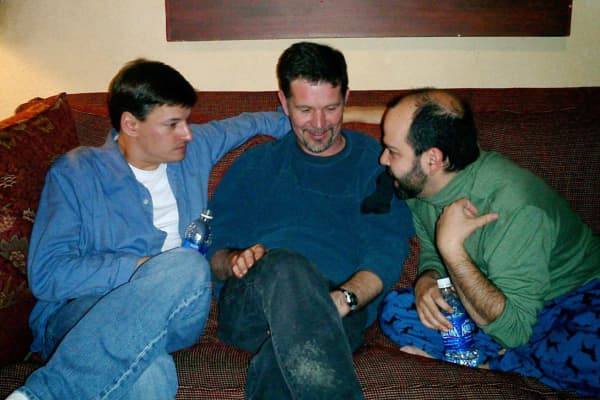
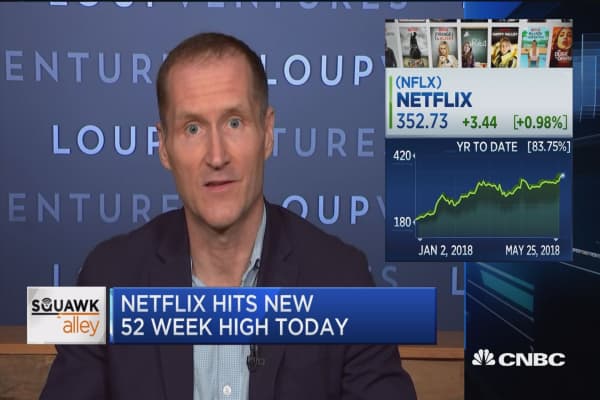
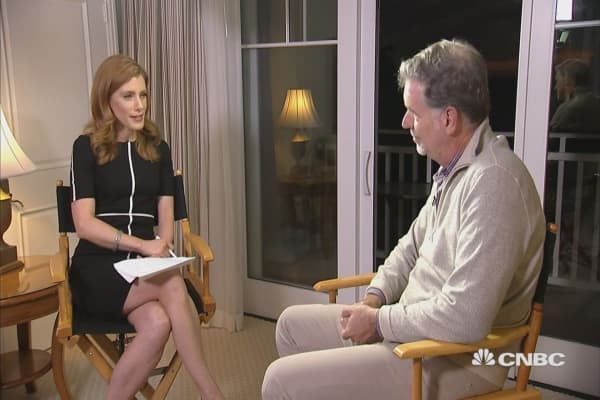
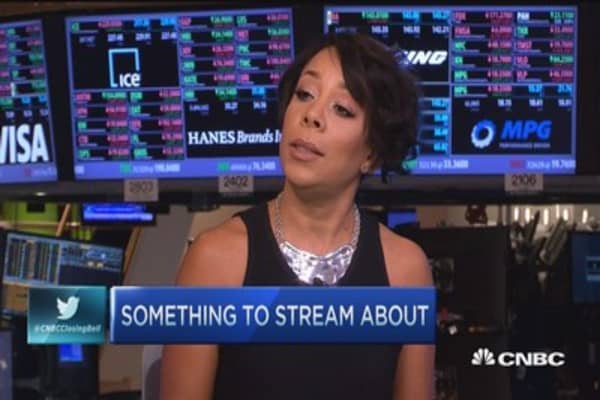
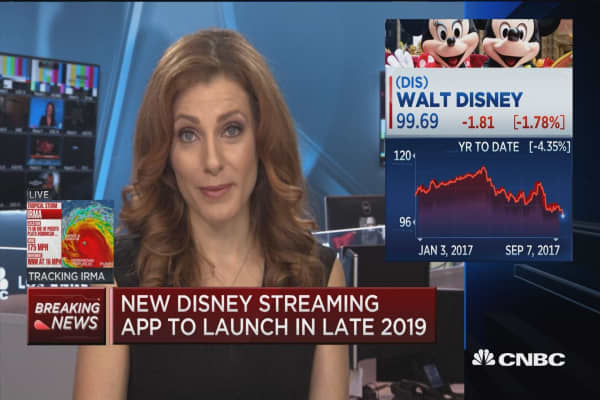

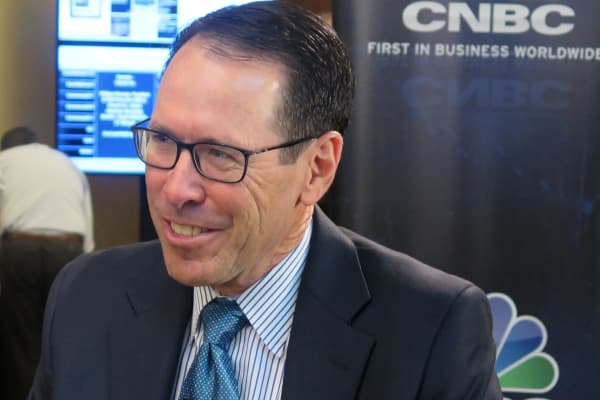


















0 comments:
Post a Comment